WE ALL WORK TILL DEATH
2/13/2020
How many artists do you know who are making a living from their art? I can hardly recall even the handful of prominent photographers who made their careers in the pre-digital era. This is not a coincidence: the project Artist Income calculated that, for example, 82.1% of artists in England make less than the official living wage. You find similar figures in Berlin, where half of the respondents generally earn less than 5,000 euros a year with their art.1
These numbers are humbling. Especially because the earning opportunities for artists and the number of art institutions in these cities and countries simply cannot be compared to the situation in Eastern Europe. The numbers show that those who are engaged in art are either the rich who do not need to earn a living or those who struggle for survival. In this article, I reflect on economics and exploitation in art and photojournalism, areas of my professional interest, which share many commonalities.
Perhaps it is worth indicating my professional attitude on the topics that will be discussed. In fact, I am in the state of an inner emigration within the local and Russian-speaking media market. Being a freelancer in photojournalism is basically a volunteer job, as it is in many other poorer countries. The inability to make a living only with photography led me to an economic scheme consisting of occasionally working for foreign media, working on my own art projects, and a stable job in the field of programming. With this balance, I am able to be inside the field of contemporary photography, but outside of the poor economy of the post-Soviet region.
Work for food
It turns out that 57% of engaged workers in the field of photojournalism/documentary photography earn less than 20,000 euros per year, according to World Press Photo. This is not much at all, given the more applied specifics of photojournalism (shooting for the mass media) compared to art. It is also not difficult to guess that geographically these photographers are located in countries with no rich media market and/or countries which do not attract regular attention from the global media outlets.
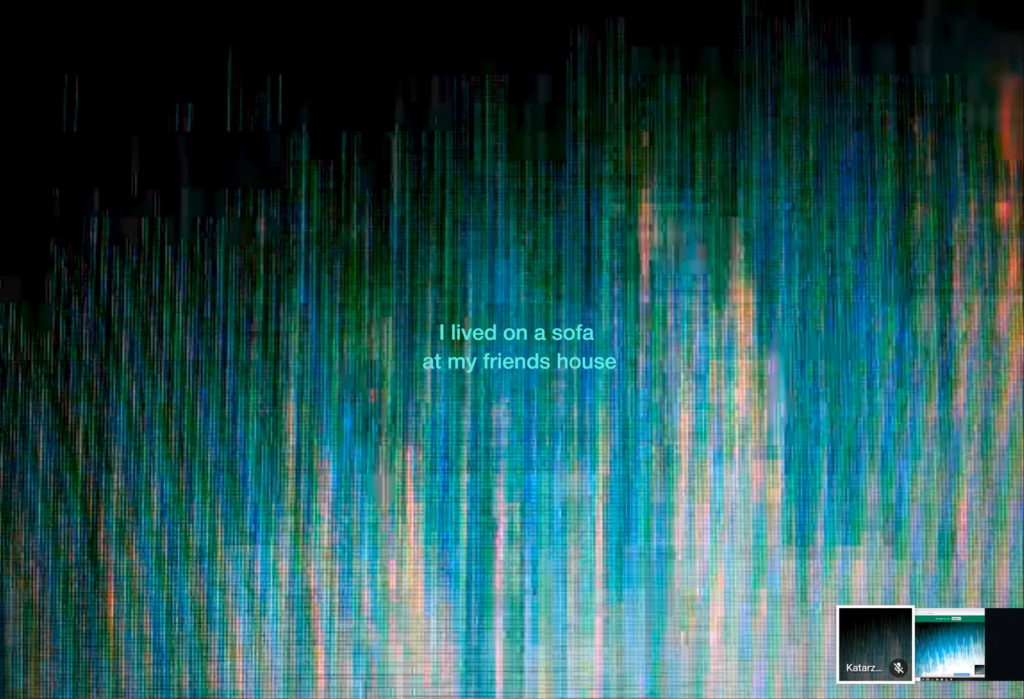
Text on the image is a quote from a video-interview with participating artists
When I tell my colleagues from Germany or Denmark about the fees for shooting for the most read Belarusian media—$ 25 at TUT.BY portal, $ 35 at Onliner.BY, and even less in other periodicals as of the end of 2019—they refuse to believe me. Yes, I myself do not understand how (and why?) to survive with this money. Doing 2-3 shoots a day in order to get $ 1,000 per month of work? This may be acceptable when I’m 20, but what should I do at 40 when my body begins to crumble because of this rapid pace and the dead weight of photographic equipment? Kasia Wolińska, a Polish dancer and choreographer based in Berlin, says2 that our generation works “till death,” meaning that none of us will receive a pension, and right now we often don’t even have enough money for regular medical care.
As long as we agree to work for humiliating fees that barely cover our costs of living, such exploitation will occur continuously. Why should editorial offices increase their expenses and reduce their profits, if there are already those ready to work for food? No one will pay us more if we do not declare our disagreement with such conditions.
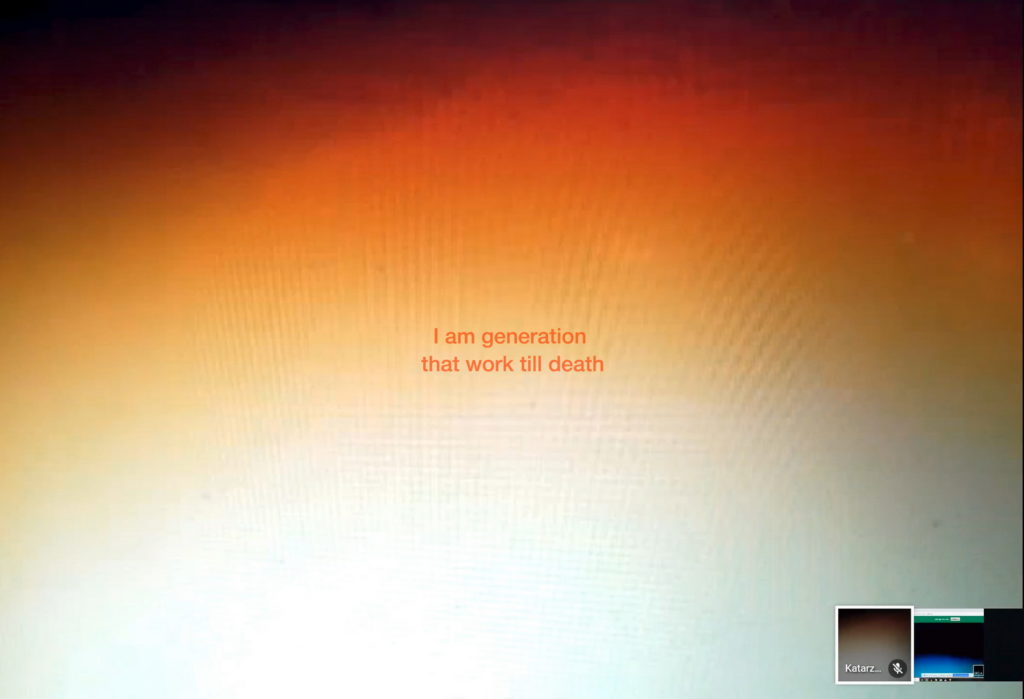
Text on the image is a quote from a video-interview with participating artists
By accepting such job offers, I give an unambiguous signal that “everything is fine, it suits me.” But what kind of damage am I doing to the field by agreeing to work almost for free? We all need to learn to talk comfortably about money, to begin valuing our work, time, and ourselves. If someone is not ready to pay me adequately, then they do not appreciate my work and me as a professional. Is it really worth it to collaborate with such people, institutions, or mass media? And will anything change next time?
Learning to say no
I am told that the budget is limited and a periodical cannot pay more. But if we all refuse collectively, then with whom will they work? They will be forced to either distinctly downgrade the quality of their product — exhibition, publication, project — or to shut down because no one wants to work with them. But the field is constantly being revived: these institutions and publications will be replaced by those who can adapt to the new demands of the environment and the market, those who will be able to re-adjust and offer adequate compensation to their employees, creating the most important thing: the product.
We all understand the importance of the work that journalists do in bringing to light social problems, supporting the values of a free society, and human rights. But can this justify low wages?
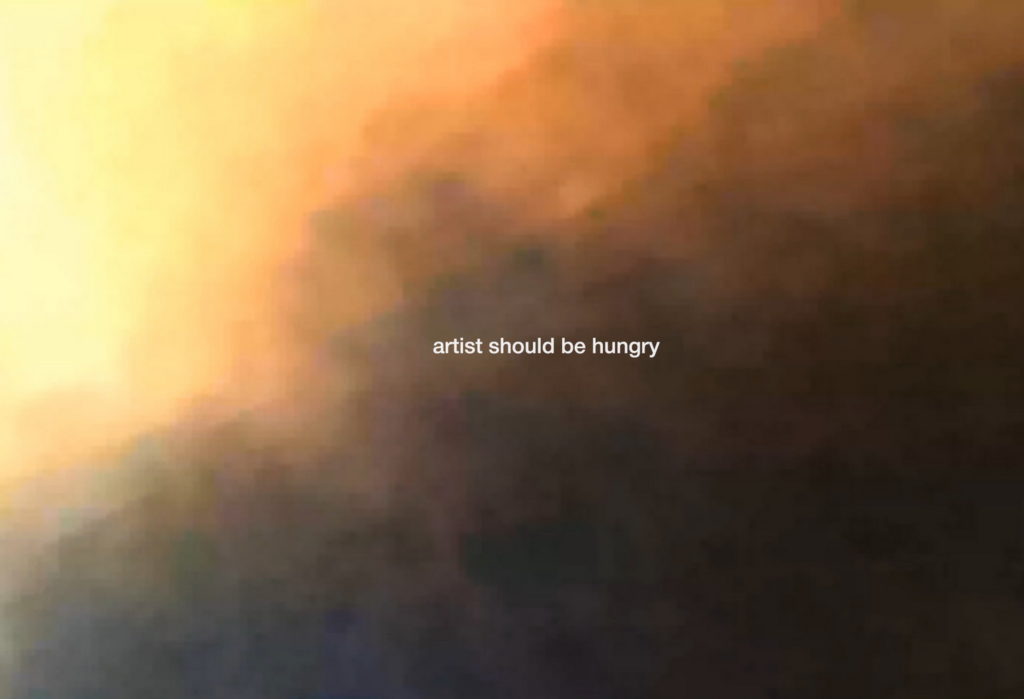
Text on the image is a quote from a video-interview with participating artists
For some reason, the conversation about exhibition fees in the post-Soviet region almost never takes place, be it the state or private institutions and festivals. I am excited to see the work of the American initiative WAGE, which gives institutions suggestions on how to pay royalties to artists depending on the annual cash flow and funding. Being a self-organized union and the voice of a cultural worker, WAGE also calls for a boycott of certain organizations which often turns out to be effective.
In Sweden, in 2009, the state entered into an MU agreement with unions of artists, artisans, designers, illustrators, and photographers, and set fixed fees for participation in exhibitions and an hourly fee for show preparations. The established fees should be paid by those institutions which receive funding from the state. In the Netherlands, there is a fee calculator, which since 2017, has been applied in practice by more than 100 institutions across the country. The logic is simple: institutions will not receive public money if they do not share it with the artists exhibited. In these and many other countries, the state intervenes in the uneven distribution of funds in the field of art and supports artists, understanding their economic vulnerability on the market.
Artist as free fuel
Being an emerging/mid-career artist, I also agree to free exhibitions and publications if I realize the immaterial benefits: for example, in the form of access to a closed professional audience or the importance of the institution’s presence in my portfolio. It happens that I see complete transparency in the work of a like-minded periodical or initiative, and I understand that everyone there works for free. But, more often than not, I can’t find an explanation for why the exhibition technician receives a salary, and the artist with a solo exhibition in the same space does not, as it happened once with the artist Simon Menner in one famous museum in Berlin.
Artists and cultural workers are in an endless cycle of filing applications (often even requiring entry fees) for numerous open-calls for projects, residences, competitions, and grants. Applications and correspondence are part of a large invisible communicative and emotional work, which is also not paid in any way.
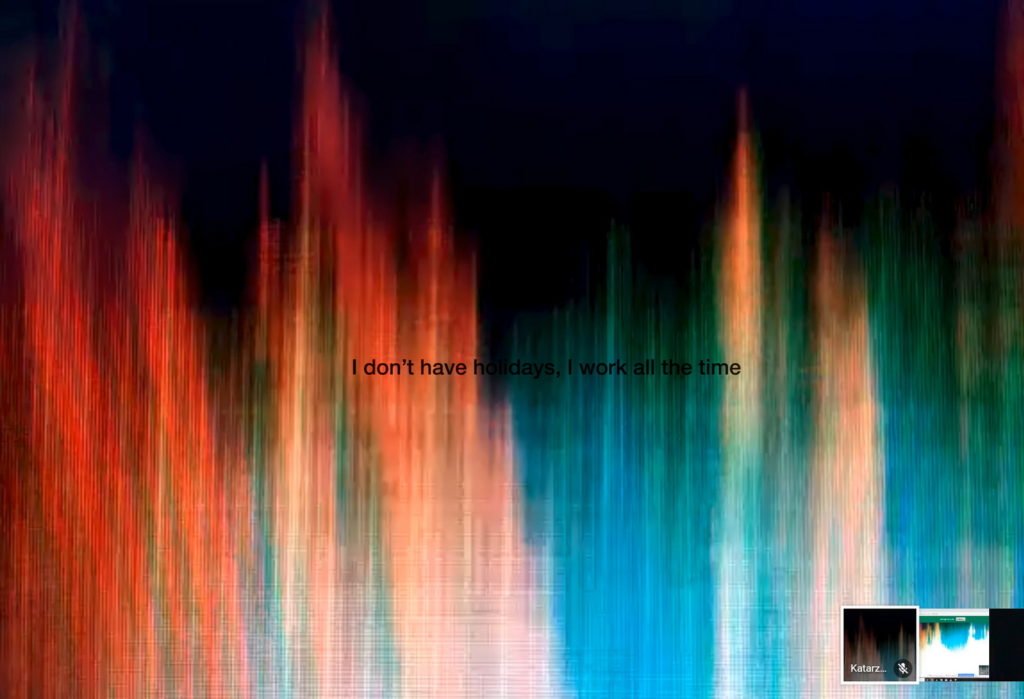
Text on the image is a quote from a video-interview with participating artists
Do you include in your project budget the time required to think and create a concept, the maintenance of your equipment, the endless correspondence, the paid annual vacations, a nanny for your child, or a psychotherapist when dealing with a complex topic?
You cannot answer.
And if, at some point, you get tired of playing this strange, always vague, game of survival in the field of culture—you head to where the rules (even if these are simply the rules of survival) exist: working in a cafe, restaurant, or office. The Swedish artist Eric Krikortz notes3 that a decent payment could attract young people from less privileged or financially insecure social groups to the field of art, which would make art more diverse and democratic.
“The artist is at the bottom of the food chain,” Ekaterina Anokhina, a photographer from Moscow, tells me.4 And it’s hard to argue with that when looking at endless contests, prizes, specialized festivals, and magazines with submission fees.
If you win, they promise visibility in the professional field, international recognition, publications. The problem is that neither exhibitions nor publications in photographic periodicals today will pay rent for an apartment or will cover the money spent on creating a project. The very few authors in Europe make sales at exhibitions or, at the least, have a paid project publication after it has been shown at a festival.
In most of the cases, we deal with a recursive exploitation cycle under the guise of good goals. In this cycle, we, artists, and cultural workers, find that we are free fuel. Menner, in his frustrated post, calculated that he received a fee only in 10% of the 160 exhibitions he participated in around the world. But how much exposure!5 The accumulated symbolic capital does not work: a long CV composed of exhibitions and publications does not guarantee financial stability, but rather causes emotional burnout.
It seems there are too many of us. Excessive amounts of free visual noise increased the competition and greatly simplified the work of intermediaries who are willing to make money on our desire to reach the viewer and/or gain recognition.
Why should GUP, FOAM, UNSEEN, LensCulture,6 and a hundred less well-known photo magazines pay photographers? Those who want to give their work for free line up for them. The editors will not even notify you if they refuse to publish your project. There are too many of us to even spend time on this.
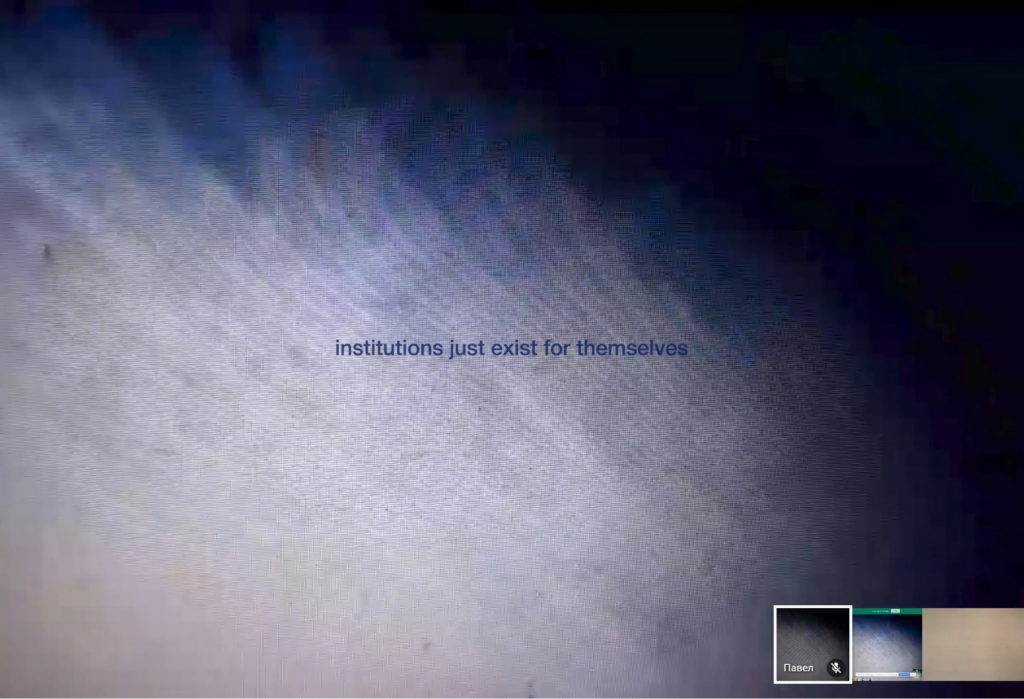
Text on the image is a quote from a video-interview with participating artists
The FOAM award, initiated in Amsterdam, is one of the most important awards in contemporary photography and charges 30 Euros for the submission of the project. To the question of the Belarusian artist, Alexander Mikhalkovich, in their Q&A video— “Why is it so much?”—the slightly surprised editors are saying that “It’s just a little bit” (the video was made for the 2017 contest and was later deleted). By establishing the entry fee, FOAM, as most of the actors in the Western European field of photography, perform economic censorship of artists from entire regions and countries: Eastern Europe, Africa, India, South America.
Unlike the photo industry, film festivals have long had the practice of free entry (a fee waiver) or reduced entry costs for economically developing countries from the DAC List.
What can be done?
The right way may be to look for other, less obvious ways to operate and finance your work. For example, working directly with people and periodicals which understand the importance of photography and the photographer as an author: mutual respect is easy to see through monetary relations (e.g. the photo editor will always be on the side of a photographer in matters of fees), in communication (you will never have unanswered emails), and certainly it doesn’t have any entry fees.
In financing an exhibition or a book, it always makes sense to look for partners among those who may be potentially interested, taking into account the profile of their activities. It was the case for me in 2017, when the production of my exhibition project Stolen Days, dedicated to several cases of political imprisonment, was supported by the former KGB building in Vilnius. And in 2018, with the support of the Civic Society Belarus, my project Blind Spot on state violence was shown in Prague in an abandoned pool of the former military barracks.
Crowdfunding can also work if your project has significant social or historical value: as a book by Sergey Brushko about the turning point in the history of Belarus, a book by Arthur Bondar with found photographs of a military photographer Valery Faminsky, and a book by Maxim Dondyuk about the events of Maidan in Ukraine.
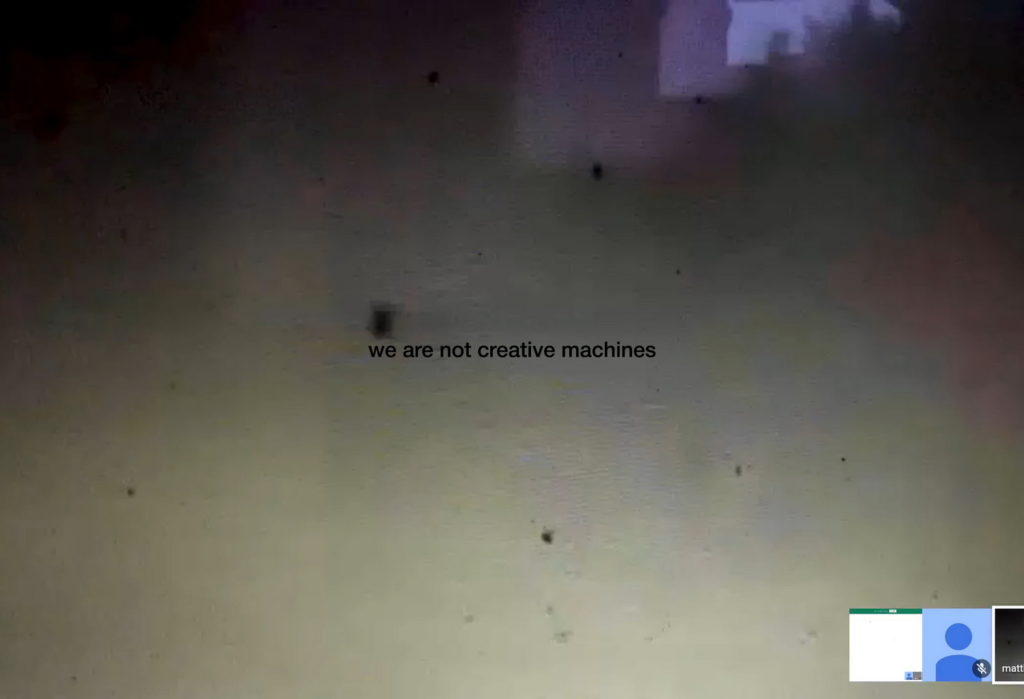
Text on the image is a quote from a video-interview with participating artists
It makes sense to search for money for the production of new projects in international cultural NGOs amongst small thematic local grants: on ecology, human rights, gender equality; preferably already in collaboration with a specialized NPO or a mass media organization. Usually, the competition among artists/photographers/videographers is dozens, if not hundreds, times less than for international photographic grants. But it is important to understand the specifics of the grant and the expectations from the results of your project. Probably just shooting a project will not be enough: you need to immediately think about the appropriate way to distribute it, be it an exhibition, book/magazine, online project, publication in the mass media.
Networking should become one of the main tools for a photographer, as Andrei Polikanov, the photo editor of a periodical Takie Dela, explains at his workshops. Networking implies building your own circle of people and friends who are interested in what, how, and why you are working. These are the people with whom you will share not only your passion but who will be also close to you ideologically and emotionally. They can become your supporters in crowdfunding campaigns, guides within photo festivals; or maybe they will even protest by the embassy of your country if suddenly you (I hope not) are detained on trumped-up charges.
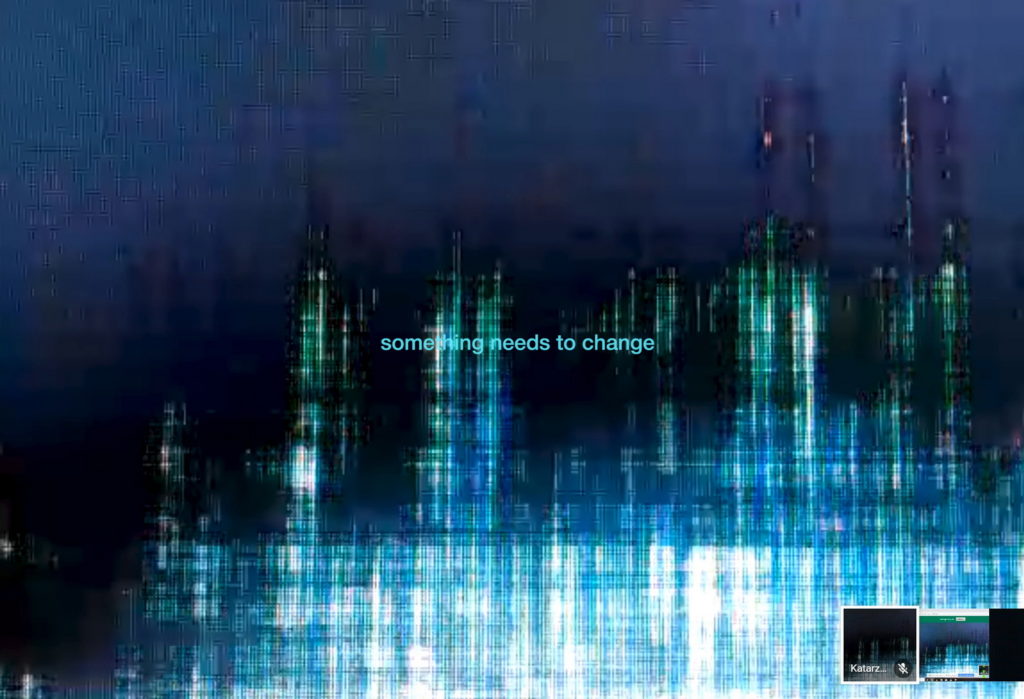
Text on the image is a quote from a video-interview with participating artists
Self-organization and union (and beyond just the union) solidarity are extremely important in the conditions of our fragmentation, extreme individualism, and political and economic oppression. The mentioned above WAGE, the table of magazine fees transparency Who Pays Photographers? and Who pays writers?, Art Leaks project on censorship and exploitation, an open letter to the leadership of the VIII Moscow Biennale; the solidarity of journalists in Russia during the arrest of Ivan Golunov in 2019, the petition against the arrest of cultural workers and artists during the mass protests in Belarus in 2017; the PAIN public campaign for solving the opioid crisis in the United States, launched by photographer Nan Goldin—these, and many others were examples of voicing our disagreement and anger with what was happening in the political, social, and institutional environments.
Let’s
Let’s create transparency tables for fees and salaries in the media and art—it is beneficial for all of us: artists, journalists, photographers, managers, curators, teachers, assistants.
Let’s be interested in the domestic economy, mechanics, and ethics of projects in which we participate, and let’s talk about their problematic aspects. Today we are not competitors, we are part of a cultural community, of vulnerable and unprotected, precarious class.
Let’s talk loudly about censorship, sexism, ageism, homophobia, violence, discrimination, rudeness, and other savagery in our fields.
Let’s build up initiatives, unions, support groups, open letters and petitions, acts of solidarity, communities and any other collaborations that show our voice and make it heard so that it can change something in the current situation of opacity, exploitation, and oppression.
It seems that no state union or existing independent organization can defend our rights today. We all found ourselves in a crystal clear situation: self-organize or die.
-
It was not possible to find relevant statistics related to the post-Soviet region, which once again indirectly indicates that the necessary attention is not paid to this problem. [ed.]
-
In an interview for the video work by Maxim Sarychau Undercover Artists, 2019↩
-
E. Krikortz, A. Triisberg, & M. Henriksson, 2015. Art workers: material conditions and labor struggles in contemporary art practice, p.19. Berlin: Minna Henriksson, Erik Krikortz & Airi Triisberg.↩
-
In an interview for the video work by Maxim Sarychau Undercover Artists, 2019↩
-
Exposure is an “imaginary currency” in which freelancers are paid, especially in the field of art. It appeared because of the employer’s faith that the promise to become famous due to participation in a project can replace the fee. Used when employers try to save money on other people’s work and/or believe that such a practice is socially acceptable. [ed.]↩
-
According to photographers published in these magazines